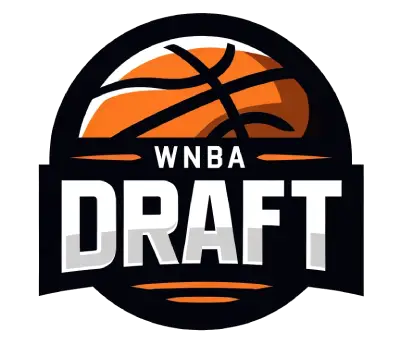8:58 AM ET
Mechelle VoepelespnW.com
CloseMechelle Voepel covers the WNBA, women’s college basketball, and other college sports for espnW. Voepel began covering women’s basketball in 1984, and has been with ESPN since 1996.
The WNBA and the players’ union have come to tentative terms on a new collective bargaining agreement, which includes a significant salary bump for the league’s highest-paid players, going from an annual base salary of $117,500 to $215,000.
The new CBA also includes other cash compensation increases, changes to free agency, travel improvements, additional motherhood and family-planning benefits, enhanced marketing and career-development opportunities, and changes to revenue-sharing potential.
“We believe it’s a groundbreaking and historic deal,” WNBA commissioner Cathy Engelbert said. “I’m proud of the players; they bargained hard, they unified, they brought attention to so many important topics.”
• Annual base pay for league’s highest paid player jumps from $117,500 to $215,000.
• With other benefits, the league’s top players could earn cash compensation in excess of $500,000.
• The agreement is for eight years, from the 2020 through 2027 seasons with a mutual opt-out provision after six years.
• 2020 salary cap will be $1.3 million, up from $996,100 in 2019, sources tell ESPN.
• Players who complete their contracts and have five or more years of service can become unrestricted free agents, unless they are tagged as a “core” player.
• The number of times a player can be tagged as “core” goes from four to three beginning this season, and drops to two beginning with the 2022 season.
• Players will receive full salary while on maternity leave, an annual childcare stipend of $5,000, and guarantee of two-bedroom apartments for players with children.
The agreement is for eight years, from the 2020 through 2027 seasons, with a mutual opt-out provision after six years. Those were the same terms for the previous agreement in 2014, and the players voted in 2018 to opt out after the 2019 season, which set the stage for this agreement.
Terri Jackson, executive director of the Women’s National Basketball Players Association, said having the eight-year deal again gave the players the sense of a strong long-term commitment from the league.
This will be the fifth CBA in the history of the WNBA, which launched in 1997. The first CBA was in 1999, and agreements followed in 2003, 2008 and 2014.
Exact salary figures have not been released, but the text of the new CBA is expected to be made public soon. The CBA is pending ratification by the players and the league’s board of governors, both of which are expected.
In addition to the high maximum salary, sources also confirmed to ESPN that the 2020 salary cap will be $1.3 million, up from $996,100 in 2019. The finalized agreement will have salary and salary-cap figures for the eight-year period.
The league said there will be a 53% increase in total cash compensation, separate from insurance benefits, housing, per diems, etc. Cash compensation consists of base salary, additional performance bonuses, prize pools for newly created in-season competitions, and league and team marketing deals.
That means the league’s top players could earn cash compensation in excess of $500,000, which would more than triple the prior maximum compensation. Other top players have the chance to earn between $200,000 and $300,000. The average cash compensation will be nearly $130,000.
The additional cash pool breaks down as a minimum of $1.6 million in offseason marketing agreements. The in-season competitions will including something called the Commissioner’s Cup, which will be further detailed when the league announces its 2020 schedule later this week.
“We will designate Cup games the first half of the season leading into the Olympic break this year,” Engelbert explained. “And then [for] the two teams with the best records, we will have a final in August as our first game back to re-launch the season. In 2020, the cash prizes will be more moderate, but in 2021, we’re going to step them up as we seek sponsors.”
As for revenue sharing, starting in 2021, there will be a chance for a 50/50 split between players and the league, based on the achievement of revenue growth targets from broadcast agreements, marketing partnerships and licensing deals. Past revenue sharing was tied to ticket sales and provided only about a 20% option for the players — but according to the union, it wasn’t triggered because the specified goals weren’t met. This revenue-sharing plan, the union believes, has a more realistic chance of benefiting the players.
Regarding free agency, which was first introduced in the 2003 CBA, changes in the new deal should allow for the potential of more player movement, starting in the free-agency period before the 2021 season.
Players then will be eligible for unrestricted free agency one year earlier than in the prior CBA. Those who complete their contracts and have five or more years of service can become unrestricted free agents, unless they are tagged as a “core” player. But part of the core designation is also changing: The number of times a player can have the core designation goes from four to three beginning this season, and drops to two beginning with the 2022 season.
“Frankly, the core is not necessarily the most popular part of the CBA,” said WNBPA executive committee president Nneka Ogwumike of the Los Angeles Sparks. “But we wanted to ensure that core is still reflective of what our system supports, while also ensuring our players have a little more freedom.
“I do understand the value of franchise players. We see the power that’s held by our brethren in the NBA, in terms of players having almost complete control of their movement. But we get that the WNBA is the WNBA. So for us to have some of both sides of that, it’s going to be helpful from all perspectives.”
Another primary objective of the union was to improve what was termed “quality of life” issues, including travel, which has long been a concern of players. In general, charter flights are not a financially feasible option, although the league did allow for charter consideration in the playoffs last year. But under the new CBA, premium economy class status is guaranteed for all players during the regular season. Also, each player will get a hotel room, rather than some players sharing rooms.
“Those things may seem small to some people, but with the nature of our job, those things really matter,” Ogwumike said. “Those things do impact performance. You have more comfort on flights, and with your own room you’re not worried about waking your teammate or interfering with their sleep patterns.”
Better maternity benefits also were negotiated, including players receiving full salary while on maternity leave, an annual child care stipend of $5,000, and guarantee of two-bedroom apartments for players with children. There are also family-planning benefits that reimburse up to $60,000 in expenses for veteran players regarding fees for adoption, surrogacy, oocyte cryopreservation (freezing eggs for later use) or fertility treatment.
The CBA allows for increased pathways to career opportunities for players after their playing careers, improved better mental health benefits and resources, and counseling and education concerning intimate partner violence.
Like Engelbert, Jackson praised the executive committee and players’ increased involvement across the board in the negotiating process.
“Getting the travel improved, getting the improvements for mothers, getting to where we can say a top player in this league could have her salary nearly double — I think those are really good things,” Jackson said. “I feel we’ll see the players be more visible year-round. There are things we asked of the league, and things they asked of the players. And we got there.”


